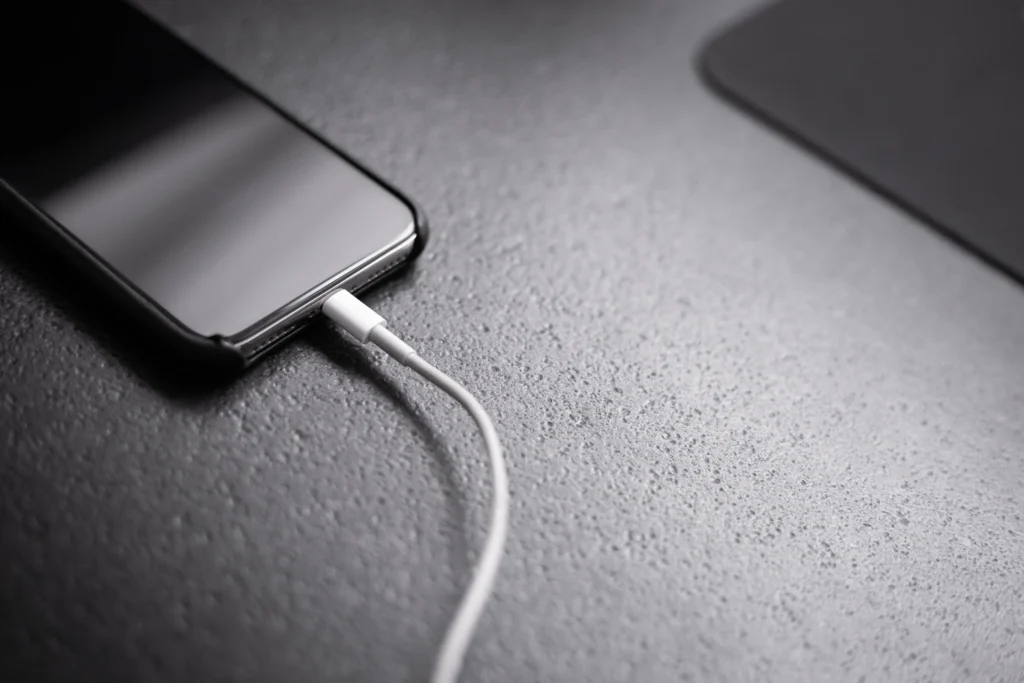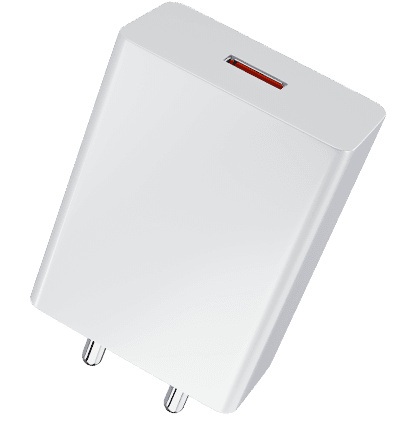Mobile gadgets have become an essential component of our lives in today’s fast-paced society. We rely heavily on these technologies to keep connected, amused, and productive, from smartphones and tablets to power banks and other devices.
Charging Technology: The Power of Next-Gen Chargers
However, all these devices share one common limitation – they need a reliable power source to keep running. This is where mobile chargers play a crucial role, providing the much-needed lifeline to keep our devices powered up.
Evolution of Charging Technology

A remarkable trip has been taken by charging technology as a result of the rising demand for power-hungry devices and the need for quicker and more effective charging options. We started with simple charging techniques that took a lot of time to fully recharge a smartphone, which caused serious difficulties for consumers on the go. However, because to technological advances, cable chargers with quicker and more dependable charging speeds have become more popular.
Fast charging standards were introduced by these wired chargers, guaranteeing interoperability with a variety of devices and drastically cutting down on charging times. Wireless charging became a game-changer as technology advanced, doing away with the need for cords and offering a seamless and practical charging experience.
Particularly Qi wireless charging emerged as the de facto standard for wirelessly powering numerous smartphones and devices. With a focus on sustainability, solar-powered chargers used the sun’s energy to recharge gadgets, providing a safe and environmentally responsible charging option.
The ongoing advancement of GaN technology promises to make chargers smaller, more effective, and faster as the globe progresses toward a future of cutting-edge charging options. The practice of simultaneously charging numerous devices has become more popular, catering to customers who own a variety of devices.
Manufacturers have made sure that these newest chargers provide customers throughout the world with safe and dependable charging alternatives through strict quality control and respect to safety requirements.
In addition to changing how we use our devices, the advancement of charging technologies has also improved device mobility, allowing us to stay connected and productive in our quick-paced digital environment.
The advancement of charging technology has been amazing. In the beginning, we relied on slow charging methods that required hours to fully recharge a device. The time it takes to recharge device batteries has been significantly reduced because to advancements in charging technology that have led to the development of quick and efficient charging solutions.
Wired Chargers: Fast and Efficient
Wired chargers have been the go-to option for most users due to their reliability and faster charging speeds. Understanding fast charging standards has become essential to ensure compatibility with the ever-evolving landscape of mobile devices.
Comparison of Leading Wired Chargers
The market is flooded with various wired chargers claiming to be the best. Two such leading chargers are the IT-CH-02 USB Charger and the IT-CH-11 Universal USB Charger.
IT-CH-02 USB Charger:
- Charges a wide range of USB-powered devices, including Android and Apple devices, ensuring compatibility with most smartphones, tablets, tablet PCs, power banks, and other 5V devices.
- Provides safe and reliable charging with built-in over-current, over-voltage, over-temperature, and short-circuit protections, safeguarding your mobile phone’s battery during recharging.
- Equipped with 1 USB-A port, allowing you to charge one device at a time efficiently.
- Universal voltage input (110-240V) makes it suitable for use in various countries and regions.
- Offers an output of 5V 1.4A, providing a steady and efficient charging speed.
IT-CH-11 Universal USB Charger:
- Charges a wide range of USB-powered devices, including Android and Apple devices, ensuring compatibility with most smartphones, tablets, tablet PCs, power banks, and other 5V devices.
- Provides safe and reliable charging with built-in over-current, over-voltage, over-temperature, and short-circuit protections, ensuring the mobile phone battery recharges in complete safety.
- Equipped with 1 USB-A port, allowing you to charge one device at a time efficiently.
- Universal voltage input (110-240V) with a low current draw of 0.3A at 50/60Hz, making it suitable for use in various countries and regions.
- Offers an output of 2.4A (max 12W), delivering fast and efficient charging for your devices.
With the advancement of technology, wireless charging has gained popularity, providing a cord-free and hassle-free charging experience. One popular wireless charger is the IT-CH-14 Dual USB Charger.
IT-CH-14 Dual USB Charger:
- Charges a wide range of USB-powered devices, including Android and Apple devices, ensuring compatibility with most smartphones, tablets, tablet PCs, power banks, and other 5V devices.
- Compatible with Smartphone / Tablet / Tablet PC / Power bank and various 5V gadgets, offering versatile charging options for all your devices.
- Supports over-current, over-voltage, over-temperature, and short-circuit protections, providing complete safety for your mobile phone battery during charging.
- Equipped with 2 USB ports, allowing you to charge two devices simultaneously, making it perfect for multi-device households or travelers with multiple gadgets.
- Universal voltage input (110-240V) with a low current draw of 0.3A at 50/60Hz, making it suitable for use in different countries and regions.
- Offers an output of 5V 2.4A (max 12W), providing fast and efficient charging for your devices, ensuring they are always ready to use.
Exploring Qi Wireless Charging
Qi wireless charging has revolutionized the way we power up our devices, offering a seamless and cable-free charging experience. Developed and promoted by the Wireless Power Consortium (WPC), Qi wireless charging has gained widespread adoption across various smartphones and other electronic devices, making it a leading standard for wireless charging.
How Qi Wireless Charging Works:
Qi wireless charging operates on the principle of electromagnetic induction, wherein an electromagnetic field is used to transfer energy between two objects. In the case of Qi charging, one object is the wireless charger (charging pad or stand), while the other is the Qi-compatible device (smartphone, earbuds, etc.).
The charging pad or stand contains a coil that generates an electromagnetic field when connected to a power source. When you place your Qi-enabled device on the charging pad, the device’s receiver coil, located inside the device, detects the electromagnetic field and initiates the charging process. The energy is transferred wirelessly from the charging pad to the device’s battery, replenishing its power.
Pros of Qi Wireless Charging:
- Convenience: One of the main advantages of Qi wireless charging is the convenience it offers. Users no longer need to fumble with cables and connectors, simply placing their devices on the charging pad is sufficient to begin charging.
- Wear and Tear Reduction: Frequent plugging and unplugging of charging cables can lead to wear and tear on device ports. With wireless charging, this concern is eliminated, prolonging the lifespan of both the device and charging pad.
- Multiple Device Compatibility: As the Qi standard has gained widespread acceptance, many modern smartphones and gadgets are equipped with Qi-compatible technology, making it possible to charge multiple devices with a single charging pad.
- Aesthetics: Wireless charging eliminates the clutter of cables, providing a cleaner and more organized charging setup. Charging pads and stands come in various sleek and stylish designs, enhancing the overall aesthetics of the charging area.
Cons of Qi Wireless Charging:
- Slower Charging Speed: Compared to some wired fast charging technologies, Qi wireless charging tends to be slower. While it offers convenience, it may take a bit longer to fully charge a device compared to traditional wired charging methods.
- Heat Generation: Wireless charging can generate more heat than wired charging due to energy transfer through induction. Although charging pads are designed to manage heat, prolonged charging at high temperatures may impact battery longevity.
- Charging Distance and Alignment: Qi charging requires precise alignment between the device and the charging pad’s coil. If the device is not placed accurately, charging may not initiate or may be less efficient.
- Charging Range: The charging distance for most Qi-enabled devices is relatively short, requiring the device to be in direct contact with the charging pad. This limits the mobility of the device during charging.
Qi wireless charging has become a widely adopted standard for many smartphones and other devices. It eliminates the need for cables and connectors, offering a seamless and convenient charging experience.
The Convenience of Power Banks
The ease of power banks has completely changed how we stay powered up and connected while on the go. Users of power banks may recharge their cellphones, tablets, and other electronic devices whenever and wherever they choose, even when there isn’t a conventional power source nearby. Power banks are small, portable devices that store electrical energy. These adaptable devices have evolved into must-have items for tourists, outdoor lovers, business people, and anyone who is constantly on the move.
One of the key functions of power banks is their ability to serve as a backup power source for devices with dead batteries. When we are away from home or in situations where access to wall outlets is limited, power banks provide as a solid lifeline, keeping our electronics charged and operational.
This convenience is especially useful when being connected is important, such as during long journeys, outdoor activities, or emergencies.
Power banks are available in a variety of shapes and capacities to meet the needs of different users. Some power banks are perfect for everyday usage and travel since they are compact and lightweight, fitting easily into pockets or bags. On the other hand, bigger power banks with more storage space are better suited for lengthy journeys or circumstances requiring the charging of several devices.
Additionally, power banks have developed to support rapid charging innovations, allowing for quicker gadget recharge periods. A lot of contemporary power banks have USB-C Power Delivery (PD) or Quick Charge (QC) features, which enable them to quickly charge compatible devices.
For people who are busy and need quick top-ups to keep their gadgets running all day, this option is especially helpful.
Another advantage of power banks is their versatility. Most power banks include multiple output ports, enabling users to simultaneously charge a number of devices. People who routinely carry multiple devices, such as wireless earbuds, tablets, smartphones, or smartwatches, will find this to be very helpful. Furthermore, some power banks even offer wireless charging, eliminating the need for wires entirely.
In addition to providing consumers with convenience, power banks help the environment by obviating the need for multiple wall chargers. They are an energy-efficient charging option since they may be charged when electricity demand is reduced, for as during off-peak hours.
With environmentally friendly solutions like solar-powered power banks readily available, users may use the sun’s energy to recharge their electronics, conforming to a more sustainable and environmentally responsible way of living.
Solar-Powered Chargers: Harnessing the Sun
Solar-powered chargers have emerged as a sustainable and eco-friendly solution, harnessing the power of the sun to recharge our devices. As the world becomes more conscious of environmental impact, these chargers have gained popularity, offering a clean and renewable energy source for powering our electronic gadgets. By converting sunlight into electrical energy, solar-powered chargers provide a green alternative to traditional chargers that rely on electricity from non-renewable sources.
The operation of solar-powered chargers is based on photovoltaic technology, where solar cells or panels absorb sunlight and convert it into direct current (DC) electricity. These solar cells are typically made from silicon or other semiconductor materials that have the ability to release electrons when exposed to sunlight. When multiple solar cells are connected, they form a solar panel, which is the primary component of solar-powered chargers.
The mobility of solar-powered chargers is one of their main benefits. They are made to be small and light, which makes them perfect for travelers, outdoor enthusiasts, and those who live in isolated places without access to power. Solar-powered chargers enable you to keep your gadgets charged without relying on conventional power sources whether you’re camping, hiking, or on a lengthy travel.
The sustainability of solar-powered chargers is another important advantage. They emit no carbon emissions and lessen the total impact on the environment by utilizing solar energy. This is completely in line with the efforts being made throughout the world to switch to renewable energy sources and stop climate change.
While solar-powered chargers offer numerous advantages, they do have some limitations. One primary concern is their dependence on sunlight. Cloudy days or low light conditions can affect charging efficiency, leading to longer charging times. However, advancements in technology have improved solar cell efficiency, allowing them to charge under less ideal conditions.
Moreover, solar-powered chargers require direct exposure to sunlight for optimal charging performance. Placing the charger in a shaded area or indoors will reduce its effectiveness. To address this, some solar chargers are equipped with built-in batteries, allowing users to store solar energy for later use when sunlight is not available.
Conclusion
Embracing the power of next-gen chargers is essential for staying connected and productive in today’s digital world. With the evolution of charging technology and the emergence of eco-friendly solutions, users have a wide array of charging options to choose from. The emphasis is still on offering effective, secure, and trustworthy charging options to keep our gadgets running smoothly and sustainably, influencing our device usage and mobility, whether they are wired, wireless, solar-powered, or portable.








